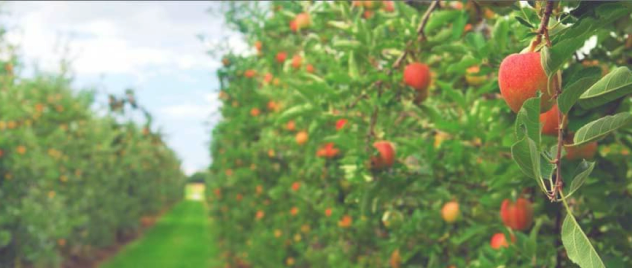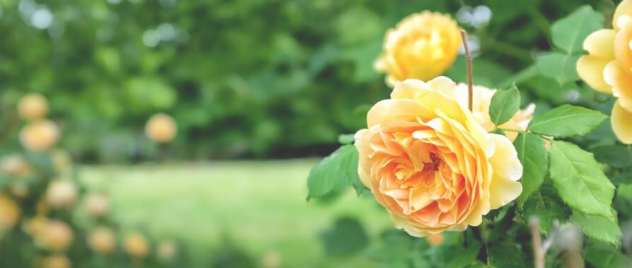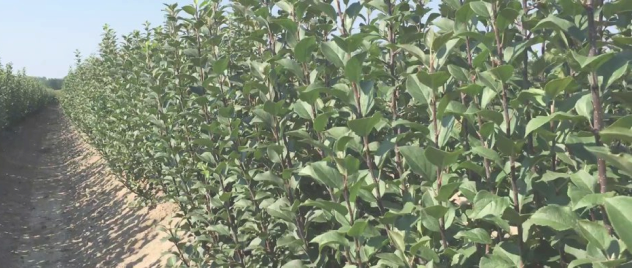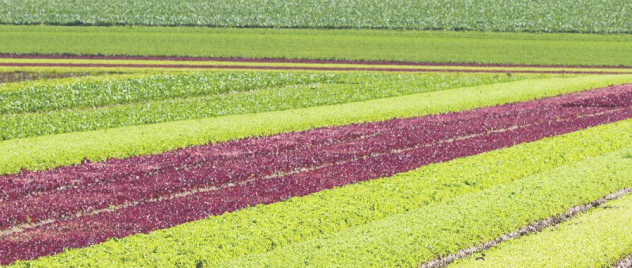BLUEBERRIES
Blueberry (Vaccinium spp.) is a fruit-bearing shrub that belongs to the Ericaceae family. Blueberries are known for their small, round berries that come in various shades of blue, ranging from deep blue to almost black. They have a sweet and tangy flavor, making them a popular choice as a fresh and frozen product, it is also widely used in processed industry for producing juices, syrups, jams, compote and other. Blueberries are packed with antioxidants, vitamins, and dietary fiber, making them a nutritious addition to a balanced diet. The blueberry shrub features attractive foliage, with small, elliptical leaves that turn vibrant shades of red and orange in the fall, adding to its ornamental appeal.
BLUEBERRY

CULTIVATION
Blueberries thrive in acidic soil conditions, typically with a pH range of 4.5 to 5.5. They prefer well-drained soil that is rich in organic matter. Blueberry bushes are typically grown in regions with cool to temperate climates, although certain varieties can tolerate warmer conditions. They require a sufficient amount of sunlight for optimal growth and fruit production. Blueberries are known to have a shallow root system and are sensitive to drought, so regular watering is essential, particularly during dry periods. Proper pruning is necessary to maintain plant health, encourage vigorous growth, and ensure an abundant harvest. Blueberries are deciduous, losing their leaves in the winter, and they are relatively low-maintenance compared to other fruit crops.
GROWING SYSTEMS
Blueberries can be grown using various systems, depending on the desired management practices, available space, and specific cultivar requirements:
Mounded Beds: Mounded beds are a commonly used system for blueberry cultivation. In this system, the soil is amended with organic matter and shaped into raised beds to improve drainage and root aeration. Blueberry bushes are planted on top of these mounded beds, allowing for better control over soil conditions and nutrient uptake. This system provides good air circulation around the plants and makes it easier to manage irrigation and fertilization.
Hedgerow: The hedgerow system involves planting blueberry bushes in a linear pattern, forming a hedge-like structure. The bushes are usually spaced closely together, allowing them to grow into a dense row. This system is beneficial for commercial blueberry production as it allows for efficient management, easy access to the plants for pruning and harvesting, and effective use of space.
Container Growing: Blueberries can also be grown in containers, which is suitable for home gardens or limited-space situations. This system provides flexibility in terms of placement and allows for better control over soil conditions, watering, and mobility. Container-grown blueberries can be placed on patios, balconies, or other areas with adequate sunlight.
TYPICAL SPACINGS
The spacing between blueberry bushes may vary depending on the specific variety, growing system, and management practices. Here are some typical spacings for blueberry cultivation:
Mounded Beds: In the mounded bed system, blueberry bushes are typically spaced between 0.9 to 1.5 meters (3 to 5 feet) apart within the row, with row spacing of 2 to 3 meters (6 to 10 feet). These spacings allow enough room for the bushes to grow and develop a healthy canopy while ensuring adequate airflow and sunlight penetration.
Hedgerow: When using the hedgerow system, blueberry bushes are generally spaced closer together. The spacing between plants within the row can range from 0.6 to 0.9 meters (2 to 3 feet), with row spacing of 2 to 3 meters (6 to 10 feet). This tight spacing encourages the bushes to form a dense row, making management practices and harvesting more efficient.
Container Growing: For container-grown blueberries, each bush is typically planted in an individual container. The container size should allow for sufficient root development and growth. A general guideline is to use containers with a capacity of at least 20 liters (5 gallons). Proper spacing between containers should be maintained to provide adequate airflow and prevent overcrowding.
See our full SELECTION of BLUEBERRY PLANTS we have in our offer
BRIGITTA
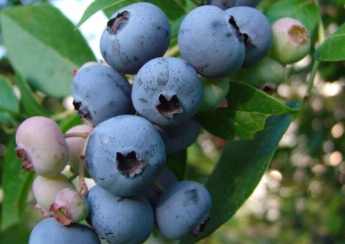
PLANT:
Brigitta blueberry is a remarkable variety known for its vigorous growth and exceptional productivity. The plants are medium to large in size, with an upright and bushy habit. This blueberry features a great resilience to low temperatures. Brigitta blueberry plants are adaptable to various soil types and are well-suited for both home gardens and commercial cultivation.
POLLINATORS:
Brigitta blueberry is a self-fertile variety.However, planting another compatible blueberry variety nearby can enhance cross-pollination and potentially increase yields.
FRUIT APPEARANCE:
The Brigitta blueberries are large and have a stunning deep but light blue color that is visually striking. The berries grow in loose clusters, and each berry has a smooth and glossy skin. They have a firm texture and a delightful balance of sweetness and tartness, making them a true delight for blueberry enthusiasts. The flavor profile of Brigitta blueberries is rich and robust, with subtle hints of tanginess that add to their appeal.
HARVEST:
Brigitta blueberries are typically ready for harvest in mid to late summer, typically late August. The berries ripen uniformly, allowing for efficient picking. The plants offer a generous yield, ensuring an abundant supply of these flavorful blueberries for enjoyment.
COMMERCIAL USE:
Brigitta blueberries are highly sought after for their exceptional quality and flavor. They are perfect for enjoying fresh, whether eaten as a nutritious snack or incorporated into various culinary creations such as smoothies, pies, and baked goods. The sweetness and tanginess of Brigitta blueberries make them an excellent choice for jams, jellies, and preserves. With their large size, enticing color, and delectable taste, Brigitta blueberries are a favorite among blueberry lovers, home gardeners, and commercial growers alike.
DUKE
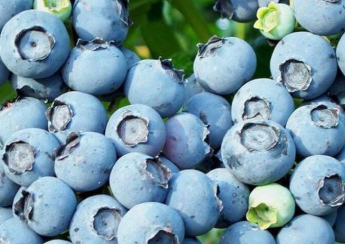
PLANT:
Duke blueberry is a popular variety known for its robust growth and excellent productivity. The plants are medium to large in size and have an upright and spreading habit. They feature attractive dark green foliage that turns a vibrant red in the fall, adding to their ornamental appeal. Duke blueberry plants are adaptable to various soil types and are well-suited for both home gardens and commercial cultivation.
POLLINATORS:
Duke blueberry is a self-fertile variety. However, planting another compatible blueberry variety nearby can enhance cross-pollination and potentially increase yields.
FRUIT APPEARANCE:
The Duke blueberries are medium to large in size and have a beautiful deep blue color. The berries grow in tight clusters and have a smooth and glossy skin. They have a firm texture and a sweet and tangy flavor that is highly enjoyable. The taste of Duke blueberries is characterized by a perfect balance of sweetness and acidity, making them versatile for both fresh consumption and culinary uses.
HARVEST:
Duke blueberries are typically ready for harvest in mid to late summer, usually in July. The berries ripen uniformly, allowing for efficient picking. The plants offer a good yield, ensuring an abundant supply of these flavorful blueberries.
COMMERCIAL USE:
Duke blueberries are highly prized for their exceptional flavor and versatility. They are perfect for enjoying fresh, adding a burst of sweetness to fruit salads, cereals, and desserts. They are also excellent for baking, as they hold their shape well and impart a delicious blueberry flavor to pies, muffins, and pancakes. Duke blueberries are also popular for making jams, jellies, and preserves. With their attractive appearance, delightful taste, and versatility in the kitchen, Duke blueberries are a favorite choice for both home gardeners and commercial growers.
BLUECROP

PLANT:
Bluecrop blueberry is a widely recognized and popular variety known for its reliable performance and high yields. The plants are medium to large in size (up to 1.5 meters), with an upright and spreading habit, medium vigorous. They have a strong and sturdy structure, making them easy to manage and harvest. Bluecrop blueberry plants are adaptable to various soil types and are well-suited for both home gardens and commercial cultivation.
POLLINATORS:
Bluecrop blueberry is partially self-fertile, but planting another compatible blueberry variety nearby can enhance cross-pollination and increase fruit set and yield.
FRUIT APPEARANCE:
The Bluecrop blueberries are medium to large in size and have a vibrant deep blue color that is visually appealing. The berries grow in loose clusters, and each berry has a slightly waxy skin with a protective bloom. They have a firm texture and a well-balanced flavor profile with a delightful combination of sweetness and tanginess. Bluecrop blueberries are known for their juicy flesh and delicious taste, making them a favorite among blueberry enthusiasts.
HARVEST:
Bluecrop blueberries are typically ready for harvest in mid to late summer, usually starting end of June to start of July. The berries ripen uniformly, allowing for efficient and convenient picking. The plants offer a high yield, ensuring an abundant supply of these flavorful blueberries.
COMMERCIAL USE:
Bluecrop blueberries are highly sought after for their excellent quality, versatility, and flavor. They are perfect for enjoying fresh, whether eaten on their own or incorporated into various culinary creations such as pies, muffins, and pancakes. Bluecrop blueberries are also commonly used in jams, jellies, and preserves due to their rich color and distinct taste. With their impressive size, attractive appearance, and delicious flavor, Bluecrop blueberries are a popular choice for both home gardeners and commercial growers.
BLUEJAY
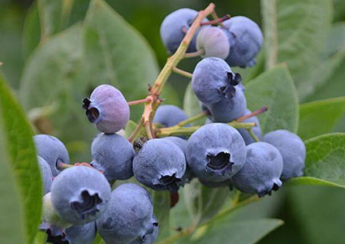
PLANT:
Bluejay blueberry is a remarkable variety known for its compact size and high productivity. The plants are medium-sized with a dense and bushy habit, making them ideal for smaller garden spaces or container cultivation. Bluejay blueberry plants feature attractive dark green foliage that turns vibrant shades of red and orange in the fall, adding ornamental value to the landscape.
POLLINATORS:
Bluejay blueberry is partially self-fertile but benefits from cross-pollination. Planting another compatible blueberry variety nearby can help increase fruit set and yield.
FRUIT APPEARANCE:
The Bluejay blueberries are medium to large in size and have a beautiful deep blue color that intensifies as they ripen. The berries grow in loose clusters and have a smooth skin with a protective bloom. They are known for their excellent flavor, with a perfect balance of sweetness and tanginess. Bluejay blueberries have a firm texture and juicy flesh, making them a delightful treat for fresh consumption.
HARVEST:
Bluejay blueberries are typically ready for harvest in mid to late summer, usually in July and August. The berries ripen uniformly, allowing for efficient picking and a great variety for machine harvest. Despite their compact size, Bluejay blueberry plants offer a good yield, providing an abundance of delicious blueberries.
COMMERCIAL USE:
Bluejay blueberries are highly valued for their exceptional flavor and versatility. They are perfect for enjoying fresh, adding a burst of sweetness to breakfast dishes, desserts, and snacks. With their manageable size, attractive appearance, and delectable taste, Bluejay blueberries are a popular choice for both small-scale gardeners and commercial growers seeking mechanized harvests and productive blueberry variety.
PATRIOT
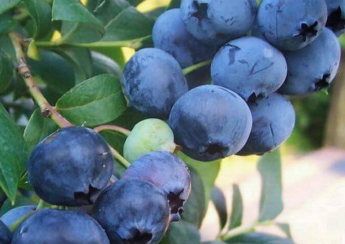
PLANT:
Patriot blueberry is an exceptional variety known for its vigorous growth and adaptability. The plants are medium-sized with an upright and spreading habit, forming a well-rounded bush. Patriot blueberry plants feature attractive dark green foliage that turns a vibrant red hue in the autumn, adding to their ornamental appeal. They are well-suited for a variety of growing conditions and are particularly tolerant of colder climates, and up to -25°C.
POLLINATORS:
Patriot blueberry is a self-fertile variety, but planting another compatible blueberry variety nearby can enhance cross-pollination and potentially increase yields.
FRUIT APPEARANCE:
The Patriot blueberries are medium to large in size with a small flower-like calyx and have a striking dark blue color that develops as they ripen. If sharp pruning is applied, the fruits grow even bigger. The berries grow in loose clusters and have a smooth skin with a silvery bloom, giving them an attractive appearance. They are known for their exceptional flavor, with a perfect balance of sweetness and tartness. Patriot blueberries have a firm texture and juicy flesh, making them ideal for fresh consumption and culinary uses.
HARVEST:
Patriot blueberries are typically ready for harvest in mid to late summer, usually in July. The berries ripen uniformly, allowing for efficient picking. The plants offer a generous yield, ensuring an abundant supply of these flavorful blueberries.
COMMERCIAL USE:
Patriot blueberries are highly regarded for their outstanding flavor and versatility. They are perfect for enjoying fresh, whether eaten as a healthy snack or incorporated into various culinary creations such as smoothies, salads, and baked goods. Patriot blueberries are also excellent for freezing and preserving, allowing their delicious taste to be enjoyed throughout the year. With their vigorous growth, attractive appearance, and delicious flavor, Patriot blueberries are a interesting choice for both home gardeners and commercial growers seeking a reliable and productive blueberry variety.
GOLDTRAUBE
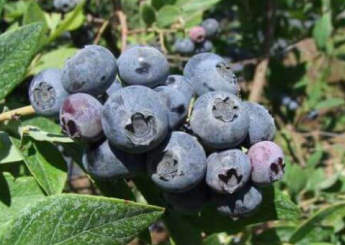
PLANT:
Goldtraube blueberry is an exceptional variety known for its compact growth and high productivity. The plants are medium-sized with a dense and bushy habit, making them suitable for gardens of all sizes. Goldtraube blueberry plants feature attractive dark green foliage that transitions to vibrant shades of red and orange in the fall, adding to their ornamental value. They are well-adapted to a variety of growing conditions and exhibit good tolerance to colder climates.
POLLINATORS:
Goldtraube blueberry is a self-fertile variety. However, planting another compatible blueberry nearby can enhance pollination and potentially increase yields.
FRUIT APPEARANCE:
The Goldtraube blueberries are medium to large in size with a unique deep purple color when fully ripe. The berries grow in loose clusters and have a smooth skin with a slight bloom, giving them an appealing appearance. They have a firm texture and a delightful balance of sweetness and tanginess. Goldtraube blueberries are prized for their rich, fruity flavor that is both distinctive and enjoyable.
HARVEST:
Goldtraube blueberries are typically ready for harvest in mid to late summer, usually from July and throughout August. The berries ripen uniformly, making the harvesting process efficient. The plants offer a good yield, ensuring a bountiful supply of these flavorful blueberries.
COMMERCIAL USE:
Goldtraube blueberries are highly valued for their exceptional flavor and versatility. They are perfect for enjoying fresh, either eaten as a tasty snack or incorporated into various culinary creations such as salads, desserts, and preserves. The unique purple color of Goldtraube blueberries adds visual appeal to dishes and makes them a standout choice for creative culinary presentations. With their compact growth habit, attractive foliage, and delicious flavor, Goldtraube blueberries are a popular option for home gardeners and commercial growers seeking a reliable and flavorful blueberry variety.
EARLY BLUE

PLANT:
Early Blue blueberry is a notable variety known for its early ripening and compact growth habit. The plants are medium-sized with a rounded and upright form, making them suitable for various garden sizes. Early Blue blueberry plants feature attractive green foliage that turns vibrant shades of red and orange in the fall, adding to their visual appeal. They are well-suited for a range of growing conditions and exhibit good tolerance to colder climates.
POLLINATORS:
Early Blue blueberry is a self-fertile variety. However, planting another late blueberry variety nearby can prolong the yielding time.
FRUIT APPEARANCE:
The Early Blue blueberries are medium-sized with a deep blue color when fully ripe. The berries grow in tight clusters and have a smooth skin with a slight waxy bloom, giving them an attractive appearance. They have a firm texture and a well-balanced flavor profile with a pleasant combination of sweetness and tartness. Early Blue blueberries are known for their juicy flesh and delicious taste, making them perfect for fresh consumption and a variety of culinary uses.
HARVEST:
Early Blue blueberries are renowned for their early ripening, typically in late spring or early summer, allowing for an extended blueberry season. The berries ripen uniformly, making them easy to harvest. The plants offer a good yield, ensuring a plentiful supply of these flavorful blueberries.
COMMERCIAL USE:
Early Blue blueberries are highly sought after for their early harvest and excellent flavor. They are perfect for enjoying fresh, whether eaten as a healthy snack or incorporated into breakfast dishes, smoothies, and baked goods. Early Blue blueberries are also suitable for freezing, allowing their delightful flavor to be preserved for later use. With their early ripening, big yields, compact growth habit, and delectable taste, Early Blue blueberries are a favorite choice for home gardeners and commercial growers alike seeking an early season and productive blueberry variety.

